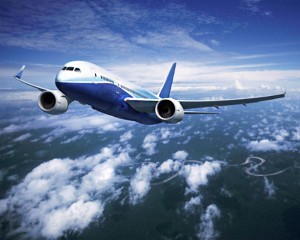 When it comes to aircraft safety, the stakes are high. There are tons of components on a commercial airliner. One malfunction for any reason can be
When it comes to aircraft safety, the stakes are high. There are tons of components on a commercial airliner. One malfunction for any reason can be
DO-160 applies to the United States, and there’s an identical set of standards for Europe, known catastrophic. That’s why equipment testing is crucial to ensure hardware meets quality and safety standards.
Here’s a summary of some of the most frequently performed aircraft equipment tests.
RTCA/DO-160
DO-160 is a standard maintained by the Radio Technical Commission for Aeronautics (RTCA) for testing avionics hardware. It applies to equipment in helicopters, general aviation aircraft and commercial airplanes. DO-160 testing covers most everything that might cause an avionics component to falter or fail. The most current version is DO-160G, which was approved in December 2010.as EUROCAE ED-14. (EUROCAE is the non-profit European Organisation for Civil Aviation Equipment.)
Electromagnetic Compatibility (EMC)
There are thousands of components in today’s jetliners. Each of these components must be resilient to electrostatic discharge, irregular voltage, magnetic fields and other unpredictable changes.
The RTCA/DO-160 standard covers these EMC test procedures:
Section 15 – Magnetic Effect
Section 16 – Power Input
Section 17 – Voltage Spike
Section 18 – Audio Frequency Conducted Susceptibility – Power Inputs
Section 19 – Induced Signal Susceptibility
Section 20 – Radio Frequency Susceptibility (Radiated and Conducted)
Section 22 – Lightning Induced Transient Susceptibility
Section 23 – Lightning Direct Effects
Section 25 – Electrostatic Discharge (ESD)
To do these tests, Eurofins E&E North America utilizes three state-of-the-art RF anechoic EMC chambers with 1/3-phase 400Hz RF power filters with Power Factor Correction Coils (PFCCs) and RF filtered DC power.
Lightning
Lightning strikes are a routine part of every commercial airplane’s experience. The Federal Aviation Administration (FAA) estimates that every airliner in the U.S. is hit by lightning once per year on average. A single bolt of lightning may send a current of 200,000 amps through the airplane, and avionics electronics must be able to withstand the effects of this strike. That’s why RTCA/DO-160 has a lightning requirement, and now the latest version of MIL-STD-461 (Revision G) has it too.
Deepening the impact of lightning strikes is the increasing use of lighter composite materials in airframe construction, including that used in the Boeing 787 Dreamliner and Airbus A380. Many composites don’t conduct lightning currents the way metal airframes do, leading to the possibility of higher voltages and currents affecting aircraft equipment.
Eurofins performs Section 22 lightning testing up to level V, and has the unique capability to perform this testing at 3rd party sites, utilizing a portable Lightning Test System.
HIRF
High intensity radiated fields (HIRF) testing is a form of EMC/EMI testing applicable to equipment that is subject to extreme electromagnetic environments.
Utilizing a 20,000 V/m Reverberation Chamber, Eurofins performs HIRF testing to satisfy RTCA requirements, as well as FAA HIRF Rule & Advisory Circular 20-158.
Environmental Simulation
Airplanes operate in all sorts of environmental conditions: searing heat, driving rain and dust, shearing winds, and with a regular risk of icing. They also have to withstand UV and solar radiation.
RTCA/DO-160 covers these environmental simulation test procedures:
Section 4 – Temperature and Altitude
Section 5 – Temperature Variation
Section 6 – Humidity
Section 7 – Operational Shocks and Crash Safety
Section 8 – Vibration
Section 9 – Explosion Proofness
Section 10 – Water Proofness
Section 11 – Fluids Susceptibility
Section 12 – Sand and Dust
Section 13 – Fungus Resistance
Section 14 – Salt Spray
Section 24 – Icing
Acceleration
From high school physics, we remember that acceleration is how fast your velocity is changing. G-forces stress an airframe and many of its components, especially during take-off and landing.
There’s a variety of acceleration tests that are conducted on airframes and their components, including the use of machinery that spins components in a centrifuge. Eurofins’ new Centrifugal Static Acceleration Tester delivers 150 g’s for test equipment up to 35 pounds, or 40 g’s up to 200 pounds.
Altitude
Modern aircraft operate at altitudes between 30,000 and 40,000 feet, and the air pressure at these altitudes is very low relative to the air pressure at sea level.
Airframes are pressurized to provide oxygen to the crew and passengers, but there is the potential for an “explosive decompression,” should the airframe fail. Aircraft components need to withstand this rapid transition to outside air pressure.
Eurofins can test avionics equipment from sea level to 100,000 feet, with various simulated atmospheric conditions, including pressure, temperature and humidity.
Vibration
Airplane equipment has to undergo rigorous vibration stress testing to make certain it won’t fall apart in flight. One of the main sources of vibration in an airframe is turbulence, and that places random vibrations forces on the aircraft. But airplane components must meet standards for both random and sine-wave vibration.
With a new Unholtz-Dickie K-Series Shaker, Eurofins’ shock & vibe capacity is:
- 17,000 lbf Sine
- 16,000 lbf Random
- 34,000 lbf Shock
- 3 Inch pk-pk Stroke
At Eurofins, we have the experience and equipment to perform DO-160 testing, as well as special test programs for commercial aircraft manufacturers like Boeing and Airbus, plus for satellite manufacturers. Contact us for a free quote today.

